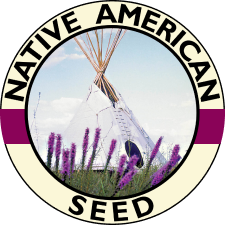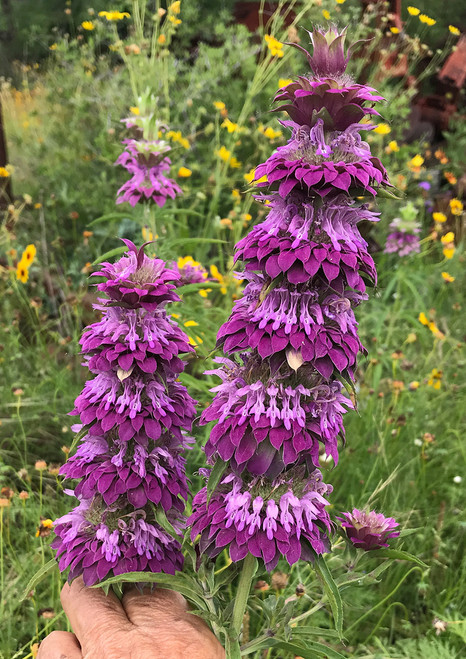Also known as "Horsemint," this native annual grows from Missouri to Kansas to Mexico. Aromatic foliage makes it deer resistant. Citridora is used as a natural insect repellent, and when it is plentiful you can grab a handful of leaves and rub them on your skin to keep the bugs away. Native Americans incorporated the use of Lemon Mint leaves for edible greens, seasoning, and as an aromatic tea. Allow it to re-seed itself before mowing.
The Natives are Friendly Lemon Mint, otherwise known as Horsemint, Purple horsemint, Plains Horsemint or Lemon Bee balm is an easy recognizable old-time favorite. The scientific name of Monarda Citriodora, was given to this wildflower in honor of Nicholas Monarda a Spanish Physician in the 1500’s who discovered several medicinal properties of plants found in the America’s. The name Citriodora refers to the citrus like scent that the plant has when the leaves are crushed. This scent makes it deer resistant and if you rub the leaves on your skin it makes a fair insect repellant also. It contains the oil citronellol that is used commercially in some insect repellants and lotions. Native Americans, such as the Hopis, Pueblo and Tewa, used the leaves in flavoring rabbit and stews and brewed the leaves for a tea to soothe sore throats and cold symptoms.
Lemon Mint does belong to the mint family which can be easily identified by their square stems. Most pollinators visit this aromatic wildflower at one time or another but it seems to be especially popular with bees, butterflies and hummingbirds. With adequate moisture it will bloom from March until the first frost, making it a dependable nectar source for most of the year. This native would be a must have for anyone interested in attracting pollinators to their landscape.
Lemon Mint is a winter annual and reseeds readily if allowed to go to seed before mowing. This wildflower really is easy to get to come up from seed, and can be planted in the fall or in very early spring. The seeds are economical and 3 lbs will give you an acre of beautiful stalks of cylindrical purple blooms. It likes the heat and tolerates all soil types with growth reaching one to two feet. Its natural range is the southern half of the U.S but would grow in many Northern regions if planted. It is not unusual to see Lemon Mint form large colonies in the wild, and at times Lemon Mint will dominate roadside landscapes.
















